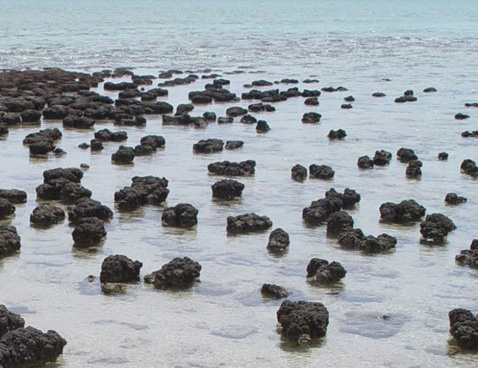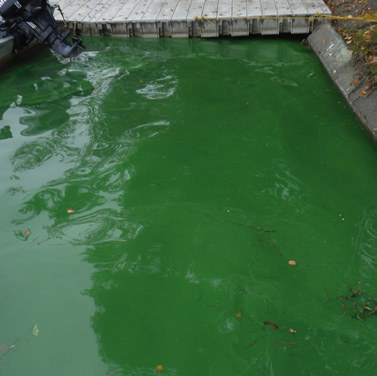Kelsey Sudol, NWCD Environmental Associate

Cyanobacteria are photosynthetic bacteria that live in most waterbodies. They first evolved over 3 billion years ago in rock structures called , which still exist in Shark Bay, Australia. Stromatolites occur in tidal areas where cyanobacteria live underneath a layer of sand on rocks, protecting them against the sun. As the first photosynthetic organisms, cyanobacteria played a large role in creating our oxygen-filled atmosphere.
Today, cyanobacteria dominate many lake communities during late summer. Their populations often increase to high numbers – resulting in “blooms”. These “peasoup” blooms destroy lake aesthetics, kill birds, mammals such as cows and deer, and aquatic life, and harm economic value by decreasing tourism and property values. More importantly, these blooms are dangerous and a serious human health concern.
Certain species in blooms create toxins, which can cause drowsiness, nausea and vomiting if ingested in large quantities by humans. Exposure to the skin may also cause rashes, hives and other allergic reactions. Dogs and other pets are also susceptible to these toxins. While these organisms are always in the water, these health concerns occur when high-density blooms are present.

There are ways to protect yourself from blooms. Notice if a body of water has a green tinge on the surface and throughout the water column. Look out for beach closures, which are controlled by the local health department. Certain lake groups and associations may also post signs warning of increased cyanobacteria levels. If you suspect you were exposed to a cyanobacteria bloom, be sure to wash off as soon as possible, and change any clothing or bathing suits.
Cyanobacteria blooms are increasing across the world, caused by agricultural and stormwater runoff which adds phosphorous and nitrogen into water systems. Key ways to reduce blooms in many local watersheds is reducing runoff, a major goal of LID or Low Impact Development strategies. Management strategies to reduce lake blooms have been implemented in northwestern Connecticut lakes, but more research is needed.For more information about the management of cyanobacteria blooms, their health effects and more, visit HERE